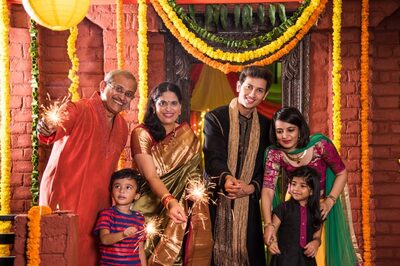
views
The phrase ‘girl next door’ has stuck to Vidya Sinha (1947-2019). An examination of the phrase first would help us understand and appreciate the late actress better.
Merriam Webster defines ‘girl next door’ as ‘a wholesome young woman from a middle-class family’. In the world of film critics, however, it became a wide-spectrum term, used not just for a plain Jane but also for any woman in cinema who was not in the mould of the Hema Malinis and the Zeenat Amans. Usually, the operative part, ‘wholesome’, is missed.
In looks, Sinha was surely wholesome, embodying the Indian rather than Western archetype of feminine beauty. Indeed, she looked a ‘wholesome young woman from a middle-class family’.
On screen, she was unpretentiously dignified and quietly assertive; she represented the woman who was making her presence felt in the India of the 1970s. Whether as a working lady, as a housewife, or as the sister of a successful businessman, she always looked authentic — neither like her more glamorous female colleagues in the industry nor like the actresses of the art-house cinema.
More importantly, she was an educated girl; she even flaunted her college degree in Pati, Patni Aur Woh song Ladki cycle waali…. “BA pass hoon main, koi dasvee fail nahin…,” she sang.
Sinha’s first major role was in the Basu Chatterjee-directed 1974 film Rajnigandha. It was small-budget, but moderately successful commercially; it also received critical acclaim. Sinha played the character of a Delhi girl, Deepa Kapoor, who has an affair with Sanjay, a mild-mannered, witty man who is not very organised or bright.
She receives a call from Bombay for a job interview. There she bumps into her old flame, the bearded, chain-smoking, intellectual Navin (Dinesh Thakur). He is well-networked, helping her get the job. Association with Navin rekindles her affection for him, but she doesn’t express her feelings; she waits — in fact, yearns — for Navin to make the first move. But the guy is too serious (or too timid or stupid, whatever) to notice the feelings of a young lady.
Finally, when she reaches Delhi, Sanjay visits her home with a bouquet of Rajnigandha flowers. Her doubts, dilemmas evaporate; she makes the choice: it would be Sanjay.
(I believe that every growing boy should watch this movie. It will teach them a moral: always convey your feelings to the girl you like; she may be waiting for you to make the move. No love story should remain unwritten just because of the cowardice or hesitancy of a young man.)
In Chhoti Si Baat too, she portrayed the character of a middle-class working woman, Prabha Narayan, a typist who is wooed by two men. Here, Amol Palekar is a diffident, bumbling suitor, pitted against the smarter Asrani. But a crash course from a worldly wise godfather, Ashok Kumar, transforms him into a bold and confident man.
In both Rajnigandha and Chhoti Si Baat, Sinha played the characters of middle-class women to a tee. There were neither the histrionics of more popular, mainstream heroines nor the stuffiness and stolidity that typified art-house cinema. Instead, there was the poignant dilemma in Rajnigandha of a woman torn between the affections for two very different men.
In Chhoti Si Baat, there was playfulness, the joy of being wooed by two men. She enjoyed teasing Palekar who, at one point, got the impression that she was lodging a complaint against him at his office for stalking her.
In Pati, Patni Aur Who, she is the wronged wife. When she finds out that her husband, Sanjiv Kumar, a senior executive in a private company, is having an affair with his secretary, Ranjeeta, she is devastated. Though a devoted wife and mother, she is not the bharatiya naari to silently and stoically suffer the philandering of her husband; she is a modern, educated woman (BA pass!), in no mood to forgive her unfaithful husband; she decides to leave him, stopped only by her concern for her son.
In Inkaar, she accedes to the command of her businessman brother, Shriram Lagoo, and breaks up with her beau, Vinod Khanna, a police officer. Though it was a crime thriller, her role as Geeta Chaudhry was important, and she played it with finesse.
Sinha did many more movies and later also television serials, but she is still remembered for the roles she did in movies in the 1970s in which she depicted middle-class women. The authenticity she brought to her characters was admirable. There was liveliness and subtlety, and there was never any dreariness or listlessness about the roles she played. This was also because of the fact that the films she worked in were not what critics call ‘serious cinema’.
In Vidya Sinha, the middle-class woman got a celluloid persona. Yes, Sinha will always be remembered as the girl next door — but in the real sense of the term.
(Author is a senior journalist. Views are personal)


















Comments
0 comment